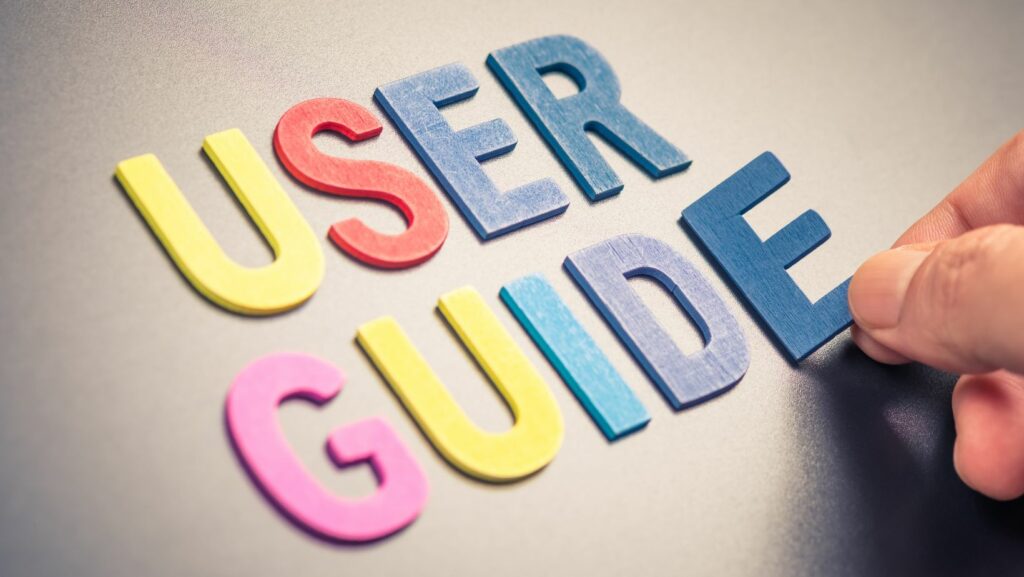Key Takeaways
- Library Technology Guides Are Essential: These guides play a crucial role in helping librarians and patrons navigate the ever-evolving digital library landscape, enhancing the overall library experience.
- Improved Access to Resources: They provide structured information that simplifies navigation through digital resources, making it easier for users to access catalogs, databases, and online services.
- Empowerment Through Training: Software guides offer necessary tutorials and best practices for staff, enabling effective management of collections and enhancing user engagement.
- Fostering Digital Literacy: Library technology guides promote digital literacy, equipping users with skills to navigate online resources that bridge technological gaps in communities.
- Supporting Community Engagement: These guides encourage participation by spotlighting library events and services tailored to diverse user needs, fostering a sense of community.
- Addressing Adoption Challenges: Understanding budget constraints and training issues is vital for successful adoption of new technologies in libraries, ensuring that resources are effectively utilized.
In a rapidly evolving digital landscape, libraries are embracing technology like never before. Library technology guides serve as essential resources, helping librarians and patrons navigate the tools and innovations that enhance the library experience. From digital catalogs to online databases, these guides illuminate the path to efficient information access.
As libraries transform into community hubs of knowledge and technology, understanding these resources becomes crucial. Whether it’s integrating new software or utilizing mobile apps for better service, library technology guides empower users to make the most of what their libraries offer. With the right guidance, anyone can unlock the full potential of these invaluable institutions.
Library Technology Guides
 Library technology guides provide crucial insights and practical information about the latest digital tools and applications used in libraries. These guides serve multiple purposes, including assisting librarians in resource management and enhancing user engagement.
Library technology guides provide crucial insights and practical information about the latest digital tools and applications used in libraries. These guides serve multiple purposes, including assisting librarians in resource management and enhancing user engagement.
- Software Training: Guides often include tutorials for library management systems, cataloging tools, and databases that streamline library operations and improve user access.
- Mobile Applications: Many guides detail mobile apps that facilitate remote access to library resources, making it easier for patrons to search databases and borrow materials.
- Digital Literacy: Guides foster digital literacy by equipping users with the skills necessary to navigate online resources, helping bridge technological gaps within communities.
- Resource Evaluation: Guides assist librarians in evaluating emerging technologies, ensuring that selections align with community needs and enhance the library’s technological offerings.
- Enhanced Access: Users gain improved access to digital resources through well-structured guides that simplify navigation.
- Informed Choices: Technology guides enable users to make informed decisions about which tools to utilize for research, study, or leisure.
- Community Engagement: Guides encourage community interaction by promoting library events and services tailored to the needs of diverse groups.
Library technology guides are essential tools for both library staff and patrons, equipping them with the knowledge to effectively utilize modern technological advancements within the library setting. The increased availability and integration of these guides significantly enhance the overall library experience, promoting continuous learning and community growth.
Types of Library Technology Guides![]()
Library technology guides encompass a variety of resources that support the integration and usage of technology within library settings. These guides can be categorized into three main types: software guides, hardware guides, and digital resources guides.
Software guides provide tutorials, best practices, and tips for utilizing library management systems, cataloging software, and research databases. These guides focus on specific applications like Integrated Library Systems (ILS) or Content Management Systems (CMS). Library staff rely on these resources for training purposes, ensuring they can efficiently manage collections and deliver services. For instance, guides on using ILS features help librarians streamline circulation processes, track inventory, and enhance patron interaction.
Hardware Guides
Hardware guides offer insights on the selection, maintenance, and operation of physical equipment used in libraries. This includes computers, printers, scanners, and self-checkout kiosks. These guides assist library personnel in understanding specifications and ensuring proper functioning of devices. For example, a guide detailing the setup of public access computers helps staff create user-friendly environments while providing troubleshooting tips to resolve common issues.
Digital Resources Guides
Digital resources guides focus on online tools and platforms that enhance library services. They include information on e-books, online journal subscriptions, and multimedia resources. These guides help both staff and patrons navigate digital collections effectively. For instance, guides about accessing and utilizing e-book platforms empower patrons to borrow digital materials easily, broadening access to literature and research.
Benefits of Utilizing Library Technology Guides
Library technology guides significantly enhance the experience for both patrons and library staff. They provide essential tools that facilitate better resource management and user engagement.
Enhancing User Experience
Library technology guides improve access to digital resources for patrons. They offer straightforward tutorials that simplify navigation through research databases and e-book platforms. By utilizing mobile apps recommended in these guides, users access library materials remotely, making reading more flexible and convenient. Additionally, guides highlight ways to foster digital literacy, enabling patrons to leverage technology effectively and participate actively in library programs. This increased engagement cultivates a community that values continuous learning.
Supporting Library Staff
Library technology guides empower staff by equipping them with the latest information on digital tools and trends in library management. They present comprehensive training resources that address software applications vital for efficient collection management, ultimately saving time and reducing errors. Staff gain insights into selecting and maintaining hardware, ensuring all equipment operates smoothly. Furthermore, these guides facilitate staff evaluation of emerging technologies, aligning new tools with community needs and preferences. This informed approach enhances collaboration and promotes innovation within the library environment.
Challenges in Library Technology Adoption
Library technology adoption faces significant challenges that can hinder effective implementation. Understanding these obstacles is crucial for successful integration of technological advancements in libraries.
Budget Constraints
Budget constraints often limit libraries’ ability to adopt new technologies. Libraries frequently operate within tight financial parameters, restricting spending on software, hardware, and training. For instance, purchasing modern library management systems may not align with annual budget allocations. Additionally, ongoing costs associated with software licenses and maintenance can strain resources. Budget limitations necessitate prioritized investments, which may delay or prevent the acquisition of needed technologies.
Training and Support Issues
 Training and support issues pose a major barrier to successful library technology adoption. Inadequate training programs result in staff feeling unprepared to utilize new systems effectively. Libraries may lack sufficient resources to offer comprehensive training sessions, impacting staff confidence and proficiency.
Training and support issues pose a major barrier to successful library technology adoption. Inadequate training programs result in staff feeling unprepared to utilize new systems effectively. Libraries may lack sufficient resources to offer comprehensive training sessions, impacting staff confidence and proficiency.
Furthermore, limited availability of ongoing support can lead to frustration among users when encountering technical challenges. For example, if staff do not receive timely assistance with a new software tool, productivity may decrease, undermining the intended benefits of the technology.
Software Guides
Library technology guides are indispensable tools that bridge the gap between users and the ever-evolving digital landscape. They empower both librarians and patrons to navigate resources effectively while fostering a culture of digital literacy. By enhancing access to information and promoting community engagement, these guides play a crucial role in transforming libraries into vibrant hubs of learning and innovation.
Despite challenges like budget constraints and training limitations, the benefits of utilizing these guides far outweigh the obstacles. As libraries continue to adapt to technological advancements, embracing library technology guides will ensure that they remain relevant and accessible to all users. Ultimately, these resources are vital for maximizing the library experience and unlocking its full potential.

